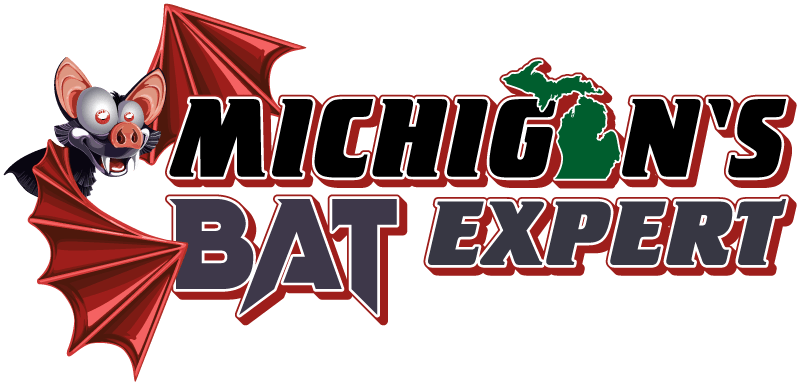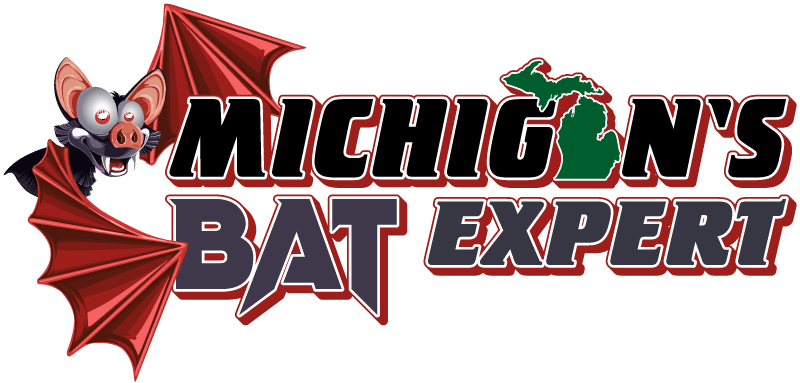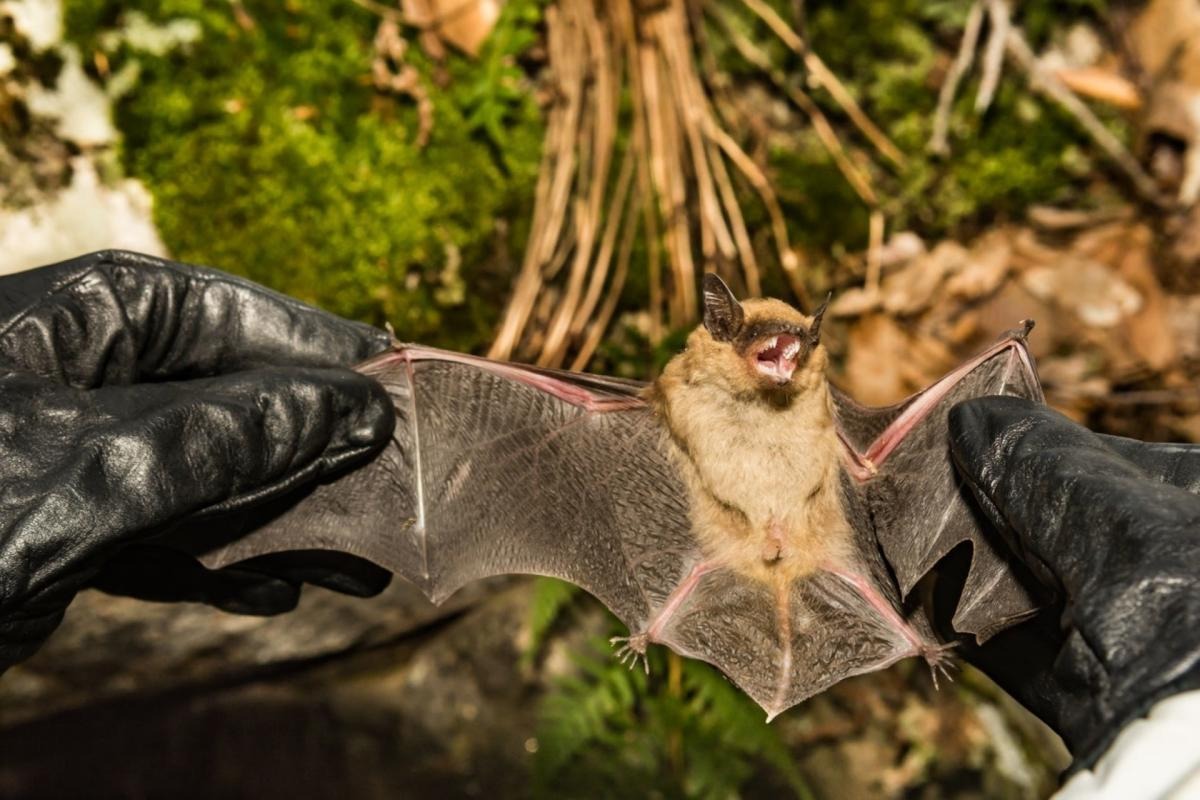
Did you know that a single Michigan bat can eat up to 1,000 insects in just one hour? This impressive fact highlights one of the reasons why Michigan bats are essential for natural pest control and maintaining a balanced ecosystem. When you think of Michigan wildlife, these hardworking, nocturnal creatures might not be the first to come to mind—but their impact is significant.
In this article, we’ll take a closer look at the diversity of bats in Michigan, discuss their unique ecological adaptations, and explain how they benefit our local environment. You’ll learn how these bats use echolocation to navigate and hunt, how they adapt to seasonal changes, and why protecting them matters for both nature and our communities. We’ll also share practical insights and real-life experiences from bat experts and trusted wildlife rescue services to give you a clear understanding of these fascinating animals.
Whether you’re a homeowner curious about managing bat encounters or a nature enthusiast eager to learn more about wildlife, this guide will provide you with useful, expert-backed information on Michigan bats.
Diversity of Michigan Bats: An Overview of Species
Michigan is home to a remarkable variety of bat species—current surveys suggest that up to nine species call our state home. Among the most common are the little brown bat, northern long-eared bat, big brown bat, tricolored bat, and silver-haired bat, while other notable species include the evening bat, hoary bat, Indiana bat, and red bat. Each of these species has evolved unique traits that allow them to thrive in different habitats across Michigan, from dense forests and wetlands to urban settings.
- For example, the little brown bat (Myotis lucifugus) is one of Michigan’s most prevalent species. Research from the U.S. Fish & Wildlife Service shows that a single little brown bat can consume up to 1,000 insects per hour. This high rate of insect consumption plays a vital role in naturally controlling pest populations, thereby reducing the need for chemical insecticides—a benefit that resonates with both agricultural communities and homeowners.
- The northern long-eared bat (Myotis septentrionalis) is another species that draws considerable attention from bat experts and wildlife rescue services. This species has been severely impacted by white-nose syndrome—a fungal disease that, according to recent studies referenced by MSU Extension, has resulted in population declines exceeding 90% in some regions. Understanding the specific ecological needs and vulnerabilities of northern long-eared bats is critical for developing effective conservation strategies.
- Big brown bats (Eptesicus fuscus) are known for their robust size and adaptability. They often roost in urban structures, including residential buildings, which brings them into frequent contact with humans. Local bat specialists note that while their adaptability has allowed them to maintain more stable populations compared to other species, they still play an essential role in controlling pest insects in urban and suburban areas.
- The tricolored bat (Perimyotis subflavus) stands out due to its distinctive, multi-colored fur and agile flight. Like the northern long-eared bat, the tricolored bat has also experienced dramatic declines due to white-nose syndrome. Conservation efforts are intensifying around this species, as local wildlife rescue services and bat experts stress its importance in natural pest control, particularly in areas where agricultural activities are prominent.
- Finally, the silver-haired bat (Lasionycteris noctivagans) is often seen during its high-altitude migratory flights. Although it is less likely to roost near human structures compared to some other species, its migratory behavior contributes to the overall genetic diversity and resilience of Michigan bat populations.
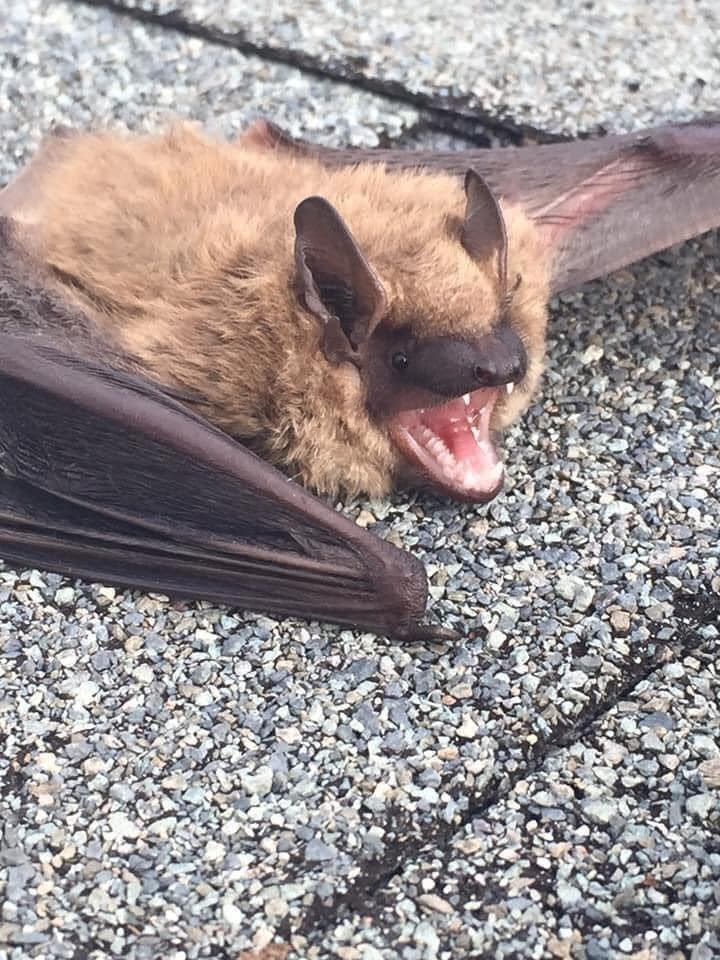
The little brown bat (Myotis lucifugus) is one of Michigan’s most common bat species, known for its impressive insect-eating abilities and vital role in natural pest control
By taking a closer look at what makes each bat species unique, we gain a clearer picture of how Michigan bats help keep our environment balanced. Ongoing research from organizations like MSU Extension and the U.S. Fish & Wildlife Service reminds us that every species has its own story and plays an important role in nature. These insights help us appreciate not only the fascinating traits of these creatures but also the careful work done in our community to monitor and protect them.
Now, let’s move on to explore the fascinating ecological tricks that allow Michigan bats to thrive.
Understanding the Ecology of Michigan Bats
One of the most captivating features of Michigan bats is their use of echolocation—a natural sonar that allows them to navigate and hunt in complete darkness. As these bats emit high-frequency sound pulses, the returning echoes create a detailed map of their surroundings. This sophisticated system not only makes them expert insect hunters but also enables them to avoid obstacles during flight.
Seasonal changes also impact Michigan bats. In the warmer months, they are active foragers, playing a key role in controlling insect populations. During winter, many enter hibernation in protected sites such as caves, abandoned mines, or even bat houses installed away from residential areas.
According to a recent report from MSU Extension, these seasonal behaviors are critical for conserving energy when food is scarce and ensuring the survival of various bat species despite challenges like white-nose syndrome.
How Michigan Bats Adapt to Their Environment
The contributions of Michigan bats extend far beyond their nocturnal flights. As natural insectivores, they help keep insect populations in check—by some estimates, bats in North America provide pest control services valued at billions of dollars annually.
In our state, Michigan bats reduce the numbers of mosquitoes, moths, and other pest insects, which not only benefits agriculture by minimizing crop damage but also helps decrease the spread of insect-borne diseases and improves public health overall.
Another fascinating benefit is the role bat guano plays in nature. Rich in nitrogen and phosphorus, bat droppings naturally enhance soil fertility. This nutrient boost helps support plant growth in natural habitats, indirectly contributing to local biodiversity and even benefiting nearby agricultural lands.
For many homeowners, the sight of bats near or in their homes may raise concerns. However, wildlife rescue services and bat experts often stress that these animals are a key part of a balanced ecosystem. While their presence might seem unsettling at first, every bat contributes to maintaining a healthier environment. Their work in reducing pest populations is so significant that studies by experts have compared the economic value of their pest control services to that of major agricultural inputs.
Challenges Facing Michigan Bats
Even though Michigan bats provide incredible benefits, they face some serious challenges.
- One of the biggest threats is white-nose syndrome. First documented in 2006, this fungal disease has decimated populations of species like the northern long-eared bat and the tricolored bat. In some regions, researchers estimate that white-nose syndrome has reduced bat numbers by as much as 90 to 100 percent—a stark statistic that local residents and bat enthusiasts have noticed over the years.
- In addition to disease, habitat loss from urbanization and deforestation further complicates the survival of these delicate creatures. As cities expand and forests shrink, the roosting sites and natural foraging areas that Michigan bats rely on are disappearing.
Local bat experts and wildlife rescue services are working hard to monitor bat populations and advocate for better conservation measures. Community-based monitoring programs and initiatives from organizations such as Bat Conservation International are helping to shed light on bat roosting habits and develop strategies to protect critical habitats.
In some Michigan communities, residents have observed a noticeable drop in bat activity over the past decade—a trend that underscores the urgent need for these conservation efforts.
By keeping a close eye on these challenges, experts hope to not only protect Michigan bats but also preserve the natural pest control and ecological balance they provide.
4 Practical Steps for Coexistence and Protection
If you’re a homeowner who has noticed bats around your property and feel a mix of curiosity and concern, know that you’re not alone. There are practical, humane ways to coexist with Michigan bats while keeping your home safe and secure. Here are some steps you can take to respect these fascinating creatures while ensuring your comfort:
- Home inspection and identification: If you suspect a bat colony in your attic or walls, schedule a free inspection with a trusted bat specialist. Professional wildlife rescue services can identify entry points and assess whether the situation requires humane exclusion.
- Humane bat exclusion: Experts recommend using one-way exclusion devices that allow bats to exit but not re-enter. This method is legal, safe, and aligns with federal and state protections.
- Bat-proofing your home: Once the bats have been safely removed, sealing off potential entry points—such as gaps around vents, windows, and rooflines—is essential. Local bat experts advise that proper insulation and maintenance can significantly reduce the likelihood of future infestations.
- Installing bat houses: Consider installing bat houses on your property, away from living spaces. This provides an alternative roosting site and helps conserve Michigan bats, ensuring they continue their role in the ecosystem without coming into conflict with homeowners. Organizations like Bat Conservation International and MSU Extension recommend this approach as a safe, non-invasive way to offer bats a preferred roosting option while reducing the likelihood of them entering your home.
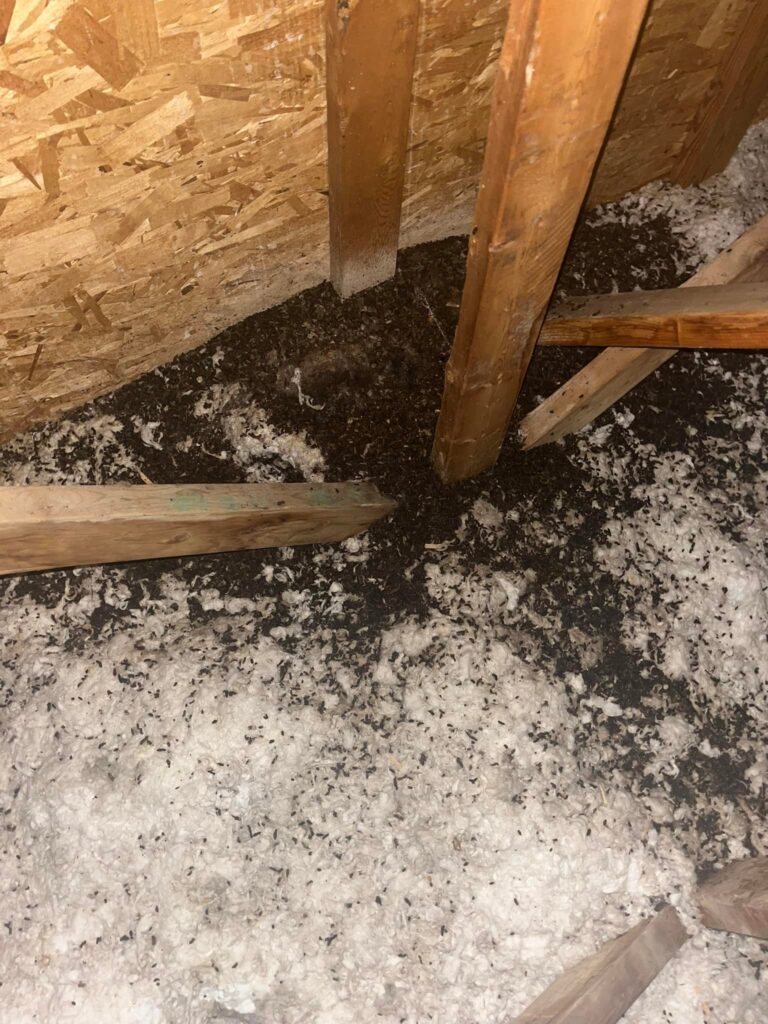
Bat guano found in attics is a clear sign of bat presence.
It’s important to address potential infestations to maintain a safe and healthy living environment.
Taking these practical steps not only protects your home but also supports the natural role of Michigan bats in the ecosystem.
Next, let’s explore why consulting local bat experts can make all the difference in managing bat encounters safely and effectively.
Why Local Expertise Matters
Navigating bat removal and prevention requires a delicate balance of safety, legality, and ecological sensitivity.
While DIY methods might seem tempting, working with professionals ensures the process is handled humanely and in full compliance with local laws. Experienced wildlife rescue services and bat specialists offer effective removal solutions and provide valuable guidance on preventing future issues, all while educating homeowners about the ecological importance of Michigan bats.
For example, one local homeowner shared her experience:
“I recently had the pleasure of working with a team of Michigan bat experts, and I can’t say enough about the incredible experience. From the moment they arrived, it was clear they were not only highly knowledgeable about bats but also truly passionate about their work. They were professional, approachable, and made the entire process easy to understand. They explained everything upfront—from the behavior of the bats to the best way to handle the situation—without ever upselling unnecessary services. What impressed me most was their dedication to both the safety of our home and the well-being of the bats. Their commitment to conservation was evident throughout, and I felt confident that we made the right choice.”
This real-life account highlights that consulting local experts means tapping into a wealth of regional knowledge. Local specialists understand Michigan’s unique climate, bat behavior, and regulatory requirements—insights that can make all the difference in managing a bat infestation effectively.
Final Thoughts on Michigan Bats and Conservation
Michigan bats are not just mysterious nocturnal creatures—they’re an integral part of our local ecosystem. Their diversity, from the little brown bat to the northern long-eared bat, and their unique roles in natural pest control and nutrient cycling, underscore why their conservation is so critical.
While challenges like white-nose syndrome and habitat loss persist, ongoing research and community-led initiatives are actively working to preserve these remarkable animals.
By understanding the behaviors and needs of Michigan bats and partnering with trusted bat experts and wildlife rescue services, homeowners can protect both their properties and local bat populations. Embracing a balanced approach to bat removal and prevention helps foster a healthier, more sustainable environment for everyone.
As we continue to learn more about these fascinating creatures, let’s all do our part to appreciate the vital role they play in nature and work together to safeguard their future in Michigan.
If you have questions about bat behavior or need advice on managing bat encounters in your home, we’re here to help.
Our team of local bat experts is available to provide free, no-obligation consultations and share guidance on humane bat exclusion practices. Whether you’re simply curious about Michigan bats or facing a bat-related challenge, feel free to reach out and learn more about how we support both homeowners and our local ecosystem.
You can contact us at (248) 923-4762 for friendly guidance and assistance.

Sam Sullivan is the owner and lead expert at Michigan’s Bat Expert, specializing in humane bat removal and exclusion services based in Oakland County, Michigan. With years of hands-on experience in wildlife control, Sam has helped countless homeowners and businesses protect their properties from bat and wildlife infestations while adhering to Michigan’s strict wildlife laws.
His expertise lies in exclusion and prevention, ensuring that bats and wildlife are removed safely and never return. Sam is dedicated to ethical and effective solutions, using proven methods that prioritize both property protection and wildlife conservation. His commitment to excellence has made Michigan’s Bat Expert a trusted name in the industry.
